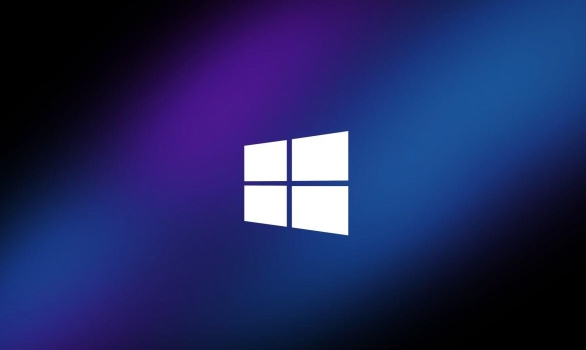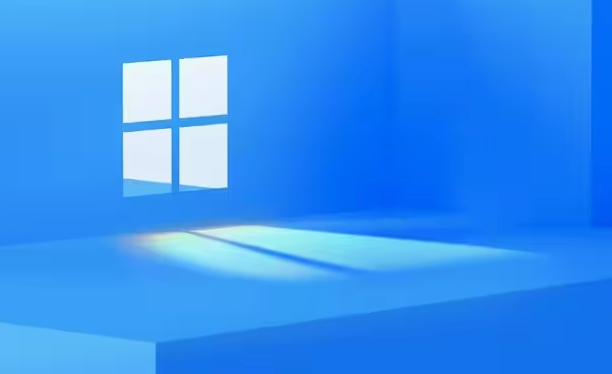Adjusting the desktop icon size can be achieved in three ways: First, use the mouse wheel to operate quickly, and scroll the scroll wheel while holding down the Ctrl key to zoom in or out the icon in real time; Second, manually select "big icon", "medium icon" or "small icon" through the "View" option in the right-click menu to quickly switch preset size; Third, advanced users can modify the registry or adjust the DPI scaling ratio to customize the icon size, but this method will affect the UI display of the entire system, and it is recommended that users operate with technical foundations. The first two methods are suitable for daily use, while the third is an alternative in special cases.

Resizing the desktop icon size is actually a very simple requirement, but many people may not know where to start when using Windows 10 for the first time. In fact, the system itself provides several ways to quickly adjust the icon size without installing additional software.

Quickly switch sizes with mouse wheel
This is one of the most convenient ways. If you are using a trackpad or a mouse with a scroll wheel, it is very easy to operate.

- Press and hold the Ctrl key on the keyboard and scroll the mouse wheel
- Scroll up is to enlarge the icon, scroll down is to reduce the icon
- This method is suitable for icon browsing mode in desktop and folders
In fact, many people realize that this function can be adjusted in this way when they first see others operating, and it will take effect in real time, with immediate effect.
Manually select icon size in view options
If you are not used to using the mouse wheel or want to control it more accurately, you can set it in the right-click menu.

- Right-click on the blank space on the desktop
- Move the mouse to the "View" option
- You can see three options: "big icon", "medium icon", and "small icon"
- Click one of them and apply immediately
The advantage of this method is that it is more intuitive, especially suitable for new users who are new to computers. However, its disadvantage is that you can only switch between three preset sizes and cannot be freely adjusted to a certain intermediate value.
Modify the registry or DPI scaling (advanced)
If you want to break through the system's default three-level limit and try to customize a more appropriate icon size, you have to move the "Advanced" setting.
- Modify the registry: You can change the actual pixel size of the icon by modifying the key values, but it requires a certain technical basis. If you are not careful, it may cause abnormal display.
- Adjust the DPI scaling ratio: You can change the scaling ratio (such as 125%, 150%) in "Settings → System → Display", which will affect the UI of the entire system, including icons, text, windows, etc.
This type of method is more suitable for people who have a certain understanding of the system. It is not recommended that ordinary users change it at will unless you really feel that the default settings cannot meet the needs.
Basically these are the methods. The first two are enough for daily life, and the third is an alternative in special circumstances.
The above is the detailed content of How to change icon size on the Windows 10 desktop?. For more information, please follow other related articles on the PHP Chinese website!

Hot AI Tools

Undress AI Tool
Undress images for free

Undresser.AI Undress
AI-powered app for creating realistic nude photos

AI Clothes Remover
Online AI tool for removing clothes from photos.

Clothoff.io
AI clothes remover

Video Face Swap
Swap faces in any video effortlessly with our completely free AI face swap tool!

Hot Article

Hot Tools

Notepad++7.3.1
Easy-to-use and free code editor

SublimeText3 Chinese version
Chinese version, very easy to use

Zend Studio 13.0.1
Powerful PHP integrated development environment

Dreamweaver CS6
Visual web development tools

SublimeText3 Mac version
God-level code editing software (SublimeText3)

Hot Topics
 Windows 11 slow boot time fix
Jul 04, 2025 am 02:04 AM
Windows 11 slow boot time fix
Jul 04, 2025 am 02:04 AM
The problem of slow booting can be solved by the following methods: 1. Check and disable unnecessary booting programs; 2. Turn off the quick boot function; 3. Update the driver and check disk health; 4. Adjust the number of processor cores (only for advanced users). For Windows 11 systems, first, the default self-start software such as QQ and WeChat are disabled through the task manager to improve the startup speed; if you use dual systems or old hardware, you can enter the power option to turn off the quick boot function; second, use the device manager to update the driver and run the chkdsk command to fix disk errors, and it is recommended to replace the mechanical hard disk with SSD; for multi-core CPU users, the kernel parameters can be adjusted through bcdedit and msconfig to optimize the startup efficiency. Most cases can be corrected by basic investigation
 How to Change Font Color on Desktop Icons (Windows 11)
Jul 07, 2025 pm 12:07 PM
How to Change Font Color on Desktop Icons (Windows 11)
Jul 07, 2025 pm 12:07 PM
If you're having trouble reading your desktop icons' text or simply want to personalize your desktop look, you may be looking for a way to change the font color on desktop icons in Windows 11. Unfortunately, Windows 11 doesn't offer an easy built-in
 Fixed Windows 11 Google Chrome not opening
Jul 08, 2025 pm 02:36 PM
Fixed Windows 11 Google Chrome not opening
Jul 08, 2025 pm 02:36 PM
Fixed Windows 11 Google Chrome not opening Google Chrome is the most popular browser right now, but even it sometimes requires help to open on Windows. Then follow the on-screen instructions to complete the process. After completing the above steps, launch Google Chrome again to see if it works properly now. 5. Delete Chrome User Profile If you are still having problems, it may be time to delete Chrome User Profile. This will delete all your personal information, so be sure to back up all relevant data. Typically, you delete the Chrome user profile through the browser itself. But given that you can't open it, here's another way: Turn on Windo
 How to fix second monitor not detected in Windows?
Jul 12, 2025 am 02:27 AM
How to fix second monitor not detected in Windows?
Jul 12, 2025 am 02:27 AM
When Windows cannot detect a second monitor, first check whether the physical connection is normal, including power supply, cable plug-in and interface compatibility, and try to replace the cable or adapter; secondly, update or reinstall the graphics card driver through the Device Manager, and roll back the driver version if necessary; then manually click "Detection" in the display settings to identify the monitor to confirm whether it is correctly identified by the system; finally check whether the monitor input source is switched to the corresponding interface, and confirm whether the graphics card output port connected to the cable is correct. Following the above steps to check in turn, most dual-screen recognition problems can usually be solved.
 Want to Build an Everyday Work Desktop? Get a Mini PC Instead
Jul 08, 2025 am 06:03 AM
Want to Build an Everyday Work Desktop? Get a Mini PC Instead
Jul 08, 2025 am 06:03 AM
Mini PCs have undergone
 Fixed the failure to upload files in Windows Google Chrome
Jul 08, 2025 pm 02:33 PM
Fixed the failure to upload files in Windows Google Chrome
Jul 08, 2025 pm 02:33 PM
Have problems uploading files in Google Chrome? This may be annoying, right? Whether you are attaching documents to emails, sharing images on social media, or submitting important files for work or school, a smooth file upload process is crucial. So, it can be frustrating if your file uploads continue to fail in Chrome on Windows PC. If you're not ready to give up your favorite browser, here are some tips for fixes that can't upload files on Windows Google Chrome 1. Start with Universal Repair Before we learn about any advanced troubleshooting tips, it's best to try some of the basic solutions mentioned below. Troubleshooting Internet connection issues: Internet connection
 How to clear the print queue in Windows?
Jul 11, 2025 am 02:19 AM
How to clear the print queue in Windows?
Jul 11, 2025 am 02:19 AM
When encountering the problem of printing task stuck, clearing the print queue and restarting the PrintSpooler service is an effective solution. First, open the "Device and Printer" interface to find the corresponding printer, right-click the task and select "Cancel" to clear a single task, or click "Cancel all documents" to clear the queue at one time; if the queue is inaccessible, press Win R to enter services.msc to open the service list, find "PrintSpooler" and stop it before starting the service. If necessary, you can manually delete the residual files under the C:\Windows\System32\spool\PRINTERS path to completely solve the problem.







